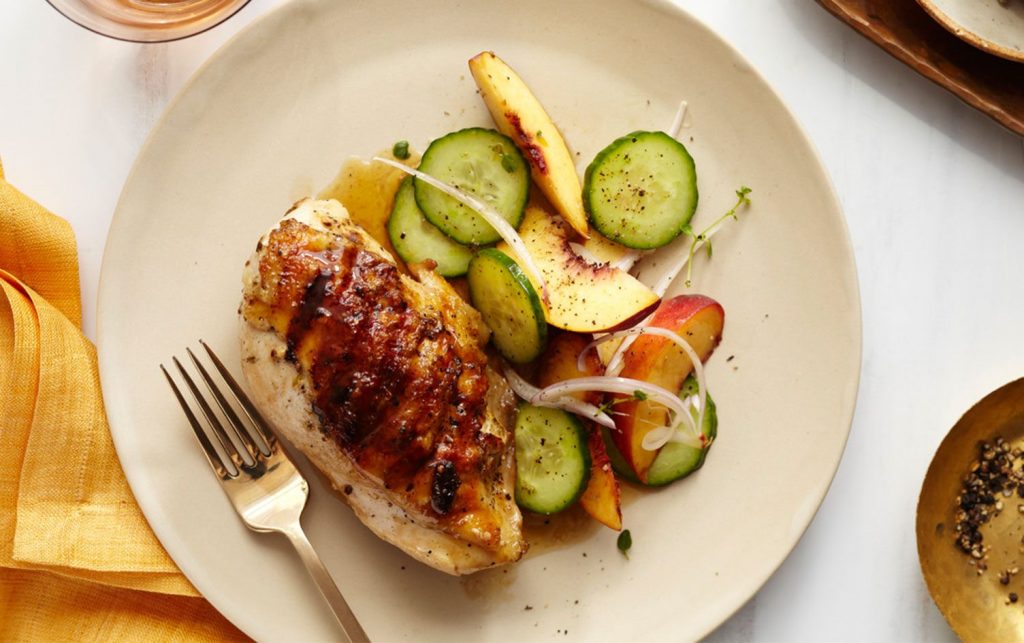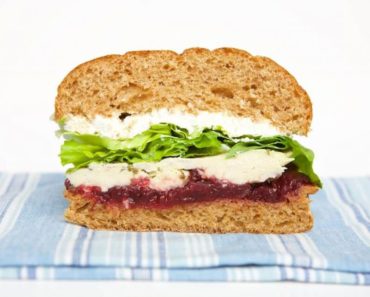
With the increasing demand for meal kit delivery services, it’s no surprise that the mother of all weight-loss programs, Weight Watchers, is testing out its own meal delivery service on the West Coast. Sign up and you get a box of fresh meals delivered to your door, ready to eat.
You can’t argue with the convenience of pre-portioned, calorie-controlled meals. However, the packaged food offered by plans like Jenny Craig and Nutrisystem isn’t as healthy as it may seem. Although most meals are low in sodium, many are surprisingly too low in calories to sustain you and contain questionable ingredients.
MyFitnessPal talked to Keri Gans, RDN, author of “The Small Change Diet,” and Georgia Rounder, RD, to get their opinions on five of the hottest weight-loss programs. Their feedback may convince you to give your own healthy meal planning a shot first.
SLIMFAST
“Have we not moved past this?” Gans says. Yes, it’s a bit hard to believe this program is still around, but it is. Each day you replace two meals with formulated shakes, eat three of their 100-calories snacks, and enjoy a 500-calorie meal, typically dinner.
Both Gans and Rounder are critical of the shakes at the foundation of this plan. The original versions contain 18 to 19 grams of sugar, and both the original and advanced nutrition shakes contain sucralose. “If you consume two shakes a day on top of snacks, that’s a lot of added sugar that isn’t necessary,” Rounder says. “Plus these drinks don’t seem nutritionally balanced.”
Bottom line: The lack of vegetables and fruit, potentially too-low calorie count and highly processed ingredients and sugar in the shakes make our RDs hesitant to recommend SlimFast.
READ MORE > WHY IS WEIGHT LOSS SO HARD?
NUTRISYSTEM
Kudos to Nutrisystem for increasing whole grains and reducing artificial sweeteners and dyes in its foods. The meals also tend to be high in fiber, which helps with satiety. Lastly, Nutrisystem encourages followers to add low-glycemic-index carbs, proteins and non-starchy vegetables to its packaged breakfast, lunch, dinner and three snacks a day.
Good thing, because our RDs expressed concern over how few calories these meals have. “Several meal options are around 150 calories. That’s way too low for anything to be considered a meal,” Rounder says. “That can lead to later cravings or late-night snacking if you’re not satisfied during the day.”
Plus some of their “meals” are not what Gans would encourage her clients to eat. “They suggest a cinnamon roll for breakfast. That’s not how I’d want somebody to eat breakfast,” she says. “And they say a lunch is one of their bars. A bar is a snack.”
Bottom line: “The big thing I don’t love is they are more concentrated on calories than anything,” Gans says. Be sure to add additional ingredients to meals if you try this plan or you may not eat enough.
JENNY CRAIG
Similar to Nutrisystem, dieters on Jenny Craig eat six times a day and can add fresh food (vegetables and fruit in this instance) to meals. Rounder noted that most meals have a good amount of protein, about 15–20 grams, which can help you feel more full.
But the meals are light on fiber and calories — so light on calories that some items labeled as snacks and desserts have the same calorie count as those labeled as meals, Rounder points out.
And while snacks can have lots of added sugar — something nobody needs more of — meals often have flavorings added. “Why is beef flavor added to a meal with beef? This seems so far from what I’d see someone prepare themselves,” Gans says.
Bottom line: Some of the meals are “too far out of kitchen,” Gans says, and most have too few calories on their own to fuel your daily activity.
READ MORE > THE MOST COMMON WEIGHT LOSS BLUNDERS
HMR
HMR is another diet plan that combines liquids and solids with three shakes and two meals a day, plus five or more servings of fruits and vegetables.
Produce is “always positive,” Gans says. But let’s talk about these shakes and meals. “These products have a lot of artificial sweeteners and thickeners and gums to make them have a more ideal consistency, I guess,” Rounder says. “And some of the shakes have aspartame, which is shocking they still use [it] considering the bad rep it’s gotten.”
Even the chicken soup, which sounds healthy, contains no actual chicken, she adds. There’s “chicken fat” and “chicken flavor,” as well as whey protein concentrate and hydrolyzed protein, but no bird. “Our bodies are not meant to digest these proteins,” Rounder says. “Real soup with real chicken is much healthier and more natural.”
Bottom line: Although some of the meals are acceptable, “there are much healthier options out there,” Gans says.
BISTRO MD
Co-founded by a bariatric doctor and her husband, Bistro MD has registered dietitians who review each weekly plan and entree to ensure they meet certain nutritional requirements. The plans provide 1,100 to 1,400 calories, divided into three meals and 2–3 snacks.
Gans and Rounder both applaud the ingredients in these foods. “Almost every ingredient, you can identify what it is,” Rounder says. However, our RDs also say 1,100 calories is too little. “You need at least 1,200 calories to support yourself to physically do the daily activities of living and to make sure you’re getting enough vitamins and minerals,” Rounder says.
Bottom line: This is probably the closest of the bunch to real food, but watch that you’re eating enough. Don’t skip the snacks thinking less is more. You’ll only starve yourself.
The post The Downfalls of Packaged Diets appeared first on Under Armour.
(via MyFitnessPal Blog)





